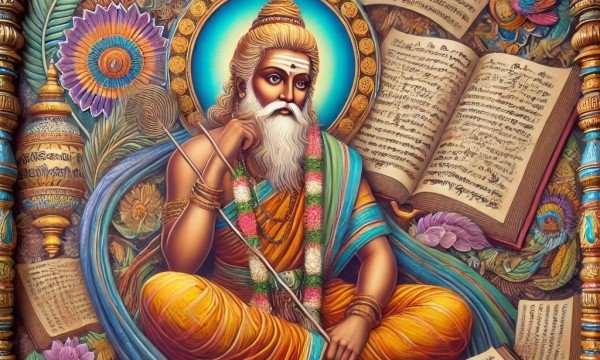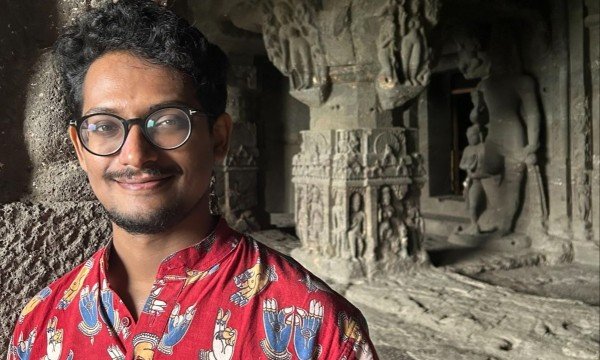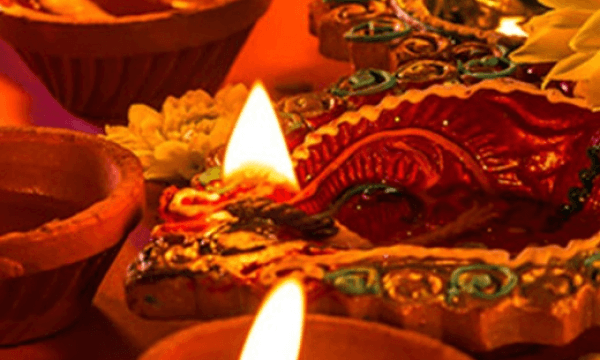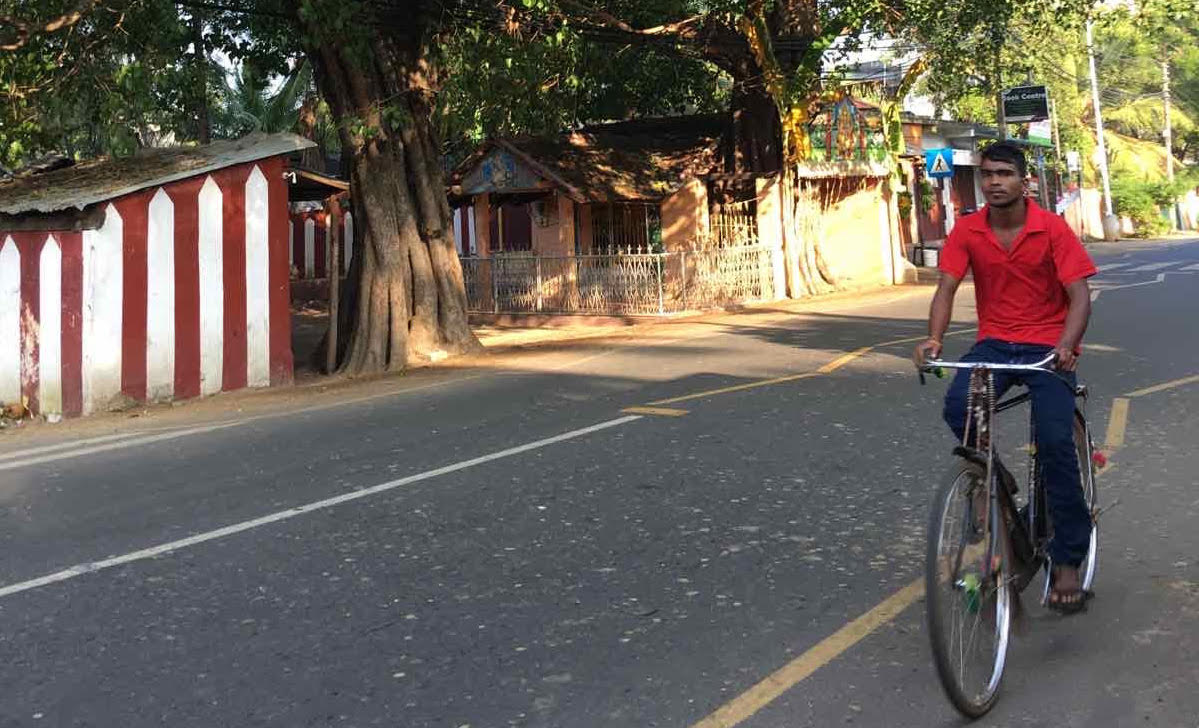
Journey Home - Part I
------------------------------------------------------
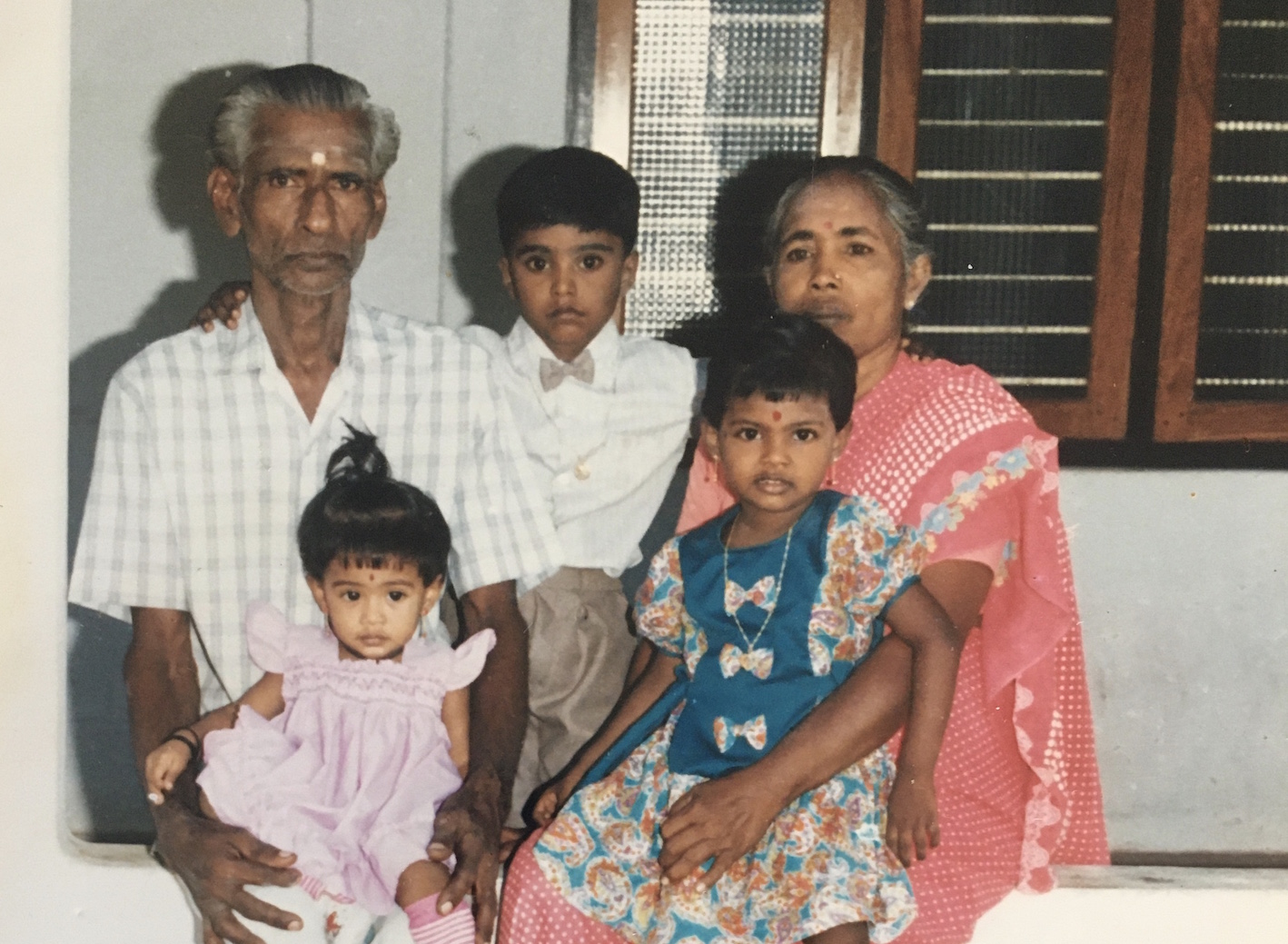
Pictured: My sisters and I (middle) with our maternal grandparents in 1995 at our house in Thumpalai, Point Pedro
My dad and I frequented between Killinochi and Point Pedro through the lagoon of Kilali at least twice a month. We were doing this because we had been displaced from our house in Jaffna, and were forced to split our time between Urithirapuram, Killinochi and Thumpalai, Point Pedro.
We had to cycle through the rough patches of Paranthan road, shortcuts consisted of jungle paths, and the passage composed of sands that lead to the coast of Poneryen, from where we would embark on our journey towards Kilali.
Taking the route via Kilali was always dangerous. The water was controlled by the Tamil Tigers, who did not have the luxury of owning passenger or cargo ships, and either way, the water at Kilaly was too shallow to accommodate bigger ships. The only viable option was to rely on tiny boats used mainly for fishing — to transport people and goods to mainland Vanni from Jaffna and vice versa.
There would be close to ten boats, tied to each other with a nylon rope, with the one at the front pulling the rest with the force generated by the inbound engine. Safety of the passengers was a mockery; they wouldn’t be provided with safety jackets, and the boats carried more weight than what they were designed for. There were all the possibilities needed for them to be capsized.
Above all, the threat posed by the Sri Lankan (SL) Navy was always something to be concerned about. There was an ugly incident, in which the SL Navy intercepted the travellers, opened fire, and abruptly killed all onboard. About a hundred innocent civilians perished. It is famously known as the “Jaffna Lagoon Massacre”. It happened on January 2, 1993.
It was against these odds that we made it a habit to take that route. My father’s elder sister was living in Uruthirapuram, Killinochi with her two little daughters and husband. Her husband was a farmer, who had his own paddy fields, chilli gardens, and cattle. Their house was built partially with clay and concrete bricks, the roof was done with shingles made out of knitted coconut leaves.
Killinochi was famous for its vicious snakes, people were often getting killed by snake bites. Hence, it was a custom there to sprinkle kerosene around the mats before going to sleep. Because kerosene keeps the snakes at bay. We also followed this precautionary measure, and avoided the potential snake bites.
The paddy fields in Killinochi are the replication of heaven on earth, wrapped up in a green carpet, with birds landing in large numbers to peck on the paddies hanging from the crops, only to be dispersed at the throw of stones or to the loud noise of the farmers. Around dawn, people in the village would throng to my uncle’s house to get fresh milk, usually it was him who would be milking the cow. It was an environment filled with nature, the only issue was the civil war and the vicious snakes, apart from that everything was perfect in Uruthirapuram, Killinochi.
As usual, my father and I decided to go to Point Pedro through Kalali, and we didn’t know at that time, that it was going to be our final journey through that dangerous route. We reached Killaly without any issues, and for a brief period stayed in Thumpalai, Point Pedro.
Thumpalai, Point Pedro, is the village located at the Northern tip of the Sri Lankan map. It is surrounded by the Indian Ocean to its north and east. The coastal areas to the north and east provided much relief to the people of Point Pedro. People often gathered during evenings at the coast of Munnai.
Kids would fly kites, build sandcastles, and collect seashells, while their parents sat on the sand facing the calm Indian Ocean, hearing those relaxing sounds of waves, and cautiously monitoring their children. Young adults would be bathing or swimming. Fishermen, after sunset, would embark on their journey for a fish catch, normally on a catamaran or small fishing boats, and their wives and kids would bid them adieu, and pray for their safe return.
Thumpalai is also famous for its Hindu temples, notably Nellandai Pathirakali Amman located on Thumpalai road, Muthumari Amman located close to the east coast of the Indian Ocean.
While we were having these unparalleled experiences of spending time at the coast of Munai and visiting our ancestral temples, the SL Army had made significant progress in its attempt to capture the city of Jaffna. The Tigers were on the retreat, and the city had finally fallen captive to the SL Army in December 1995.
The fall of Vadamaratchi and Thenmaratchi districts were also imminent as the Tigers didn’t have the military power to withstand the advancing enemy; and as expected, they abandoned the rest of the peninsula without offering any resistance. They were on the retreat to the jungles of Vanni, and wanted the civilians to follow suit.
We found ourselves in a dilemma, whether to move with the Tigers or to stay back and face the SL Army. Most of our neighbours were of the opinion that there wouldn’t be any dangers as the Tigers themselves were withdrawing without fighting, which meant no civilians would get caught in the crossfire.
But the human rights abuses of the SL Army in the past told us a different story, and we made up our minds to move into rebel held areas; the Vanni mainland. It was again through the lagoon of Kilali.
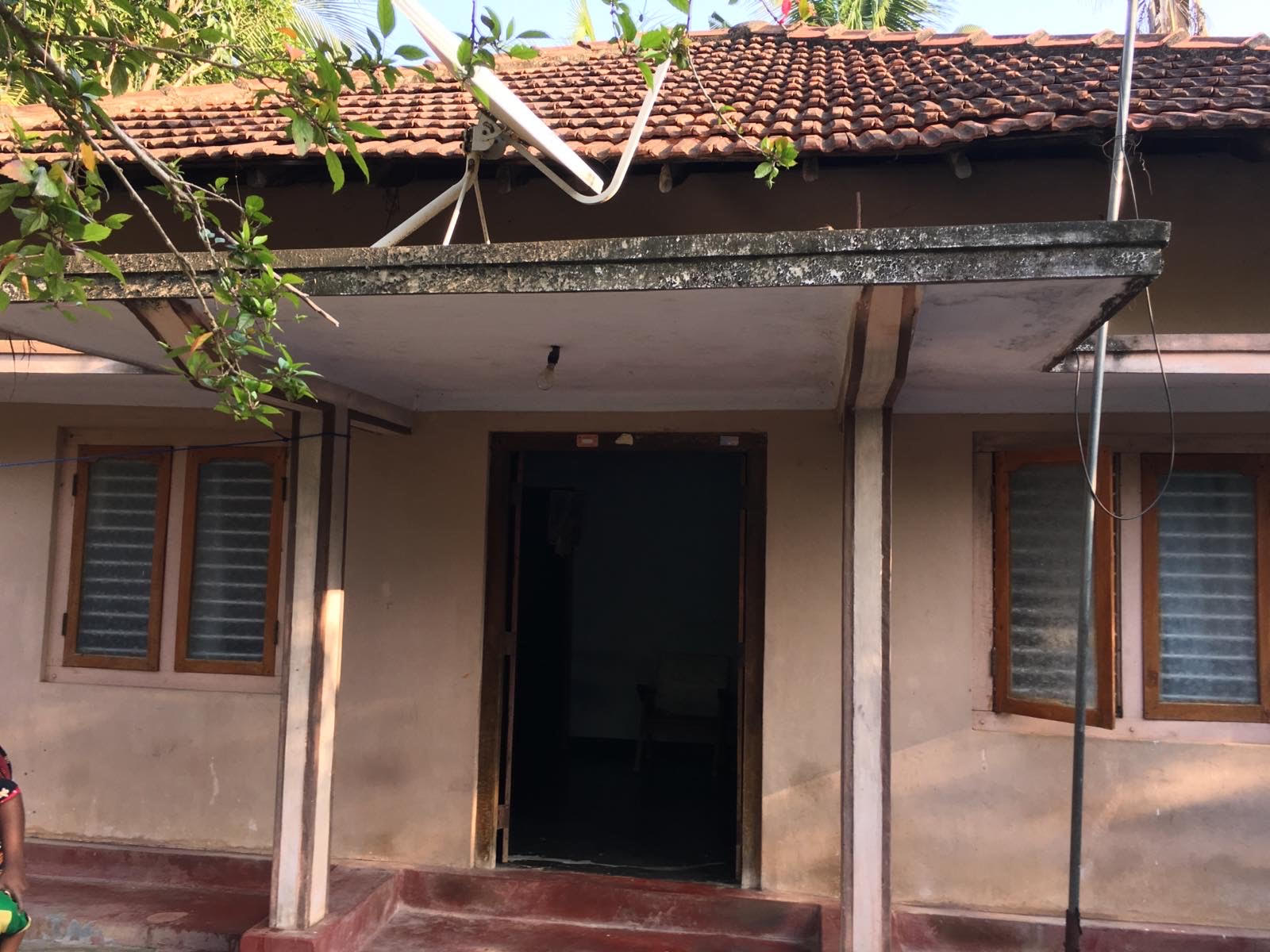
Journey Home - Part II
-----------------------------------------------------
After deciding to go to Vanni, we packed our belongings in the only suitcase we had, it was severely damaged, because it was not too long ago that we were displaced from our house in Jaffna. Even the suitcase, which was wary of displacements, looked at us and said “Not again, I’m too tired for this..” We didn’t give a damn about its physical pain, rather we decided to wreak havoc on it, just like the two warring parties wreaking havoc on Tamils. The items that couldn’t find any room in the suitcase were packed in several white nylon fertilizer bags, which were then readily available in every household in Jaffna.
After firmly tying the suitcase and the fertilizer bags on the bicycle carriers, we bid adieu to the people who stayed behind and began our journey towards Vanni.
Kodikaman - Kachai road, that leads to Kilali, was met with heavy traffic. Bicycles, motorcycles, land masters, cars, auto rickshaws and bullocks — all were moving slowly, with loads of personal belongings on their backs, and a lot of burden in their hearts.
The Coast of Kilali was congested with thousands of people, desperate to cross the lagoon and touch ashore in Ponereyn. People took shelter under coconut trees, palmyras and makeshift tents made out of tarpaulins donated by UNICEFF. It was nothing short of a human disaster, a chaos - children were crying out of hunger, men and women were in a hurry to purchase the boat tickets, and cross the lagoon as soon as possible. Utter desperation on their faces as to what the future held for them.
"What kind of a misery is this?" They wondered. "Why does this land go through so much? Why are we losing everything in the name of freedom? Our homes, jobs, education for our kids, our years worth of savings.. moving into the Tigers’ held territory would ensure what? Living again under some deplorable conditions? Languishing in makeshift refugee camps without any means to feed the family? Fearing the forcible recruitment of our children by the Tamil Tigers to fight the ruthless SL Army?"
Wary, fear, and despair are the words to describe what they went through.
My dad went in line to get the boat tickets, it was a long wait, about eight hours, before he finally obtained the tickets. Our boats were scheduled to depart from Kilali to Poneryen at 1:00AM. We still had about two hours. We were anxiously waiting for our turn, and praying for no unfortunate events to occur. Within minutes of our prayer, we started hearing the bomb explosions. It looked like our prayers didn’t fall into the ears of God, or he had a better plan altogether. It was an artillery attack by the SL Army from the Elephant Pass military base. Panic stricken people started running for their lives, others slept on the ground to escape injuries from the exploding shrapnel all around. It turned out that those artillery shells were made of plastic, it was used only to disperse the crowds, not to cause them any harm.
My dad, two aunts and I also started running, and ran towards Eluthumaduvaal, the sound of explosions eased off into the night, and we reached a Catholic Church, where many other refugees were staying, we also stayed there for the whole night. The sky was lighting up with the paralight, sent up by the SL army. They were closely monitoring the situation. We were very tired and fell into a deep sleep, and woke up to the sound of roosters. It was dawn, the sun was rising. People were in discussion as to what to do next.
Journey Home - Part III
-----------------------------------------------------
After failing to reach Vanni via Kilali, and having spent the night at a Catholic Church in Eluthumaduvaal, we heard a rumour that a group of people had started marching towards Jaffna with white flags, expressing nothing but the willingness to peacefully go back to their houses they had left behind six months ago. What first appeared to be a rumour, proved to be true, and the rest of us followed suit.
After a long walk, and many security checks by the SL army, we reached Ariyalai, Mambalam Junction, Kacheriyadi, and then Jaffna Town. The whole town was deserted; the shops, which once used to buzz with shoppers, looked looted and destructed. Their name boards pierced by bullets were hanging from one or two nails. Some buildings were standing without any roofs, some partly damaged, with pieces of shingles spread on the floor. It looked like a ghost town. The SL army was patrolling, in their military trucks, sitting in the back in camouflages, holding their AK-47's, pointing towards the sky. It looked like, only the four of us, our family, was in that entire town.
We reached Hospital Road, and began walking in the direction of K.K.S Road. It was already dusk, the sun was quickly setting and it became pitch dark within minutes as we reached the Thadartheru junction. We were within inches from going into our house, very excited, only to be turned away by the SL army stationed at Thadartheru junction. There was a massive military base setup by the SL army at Thadartheru junction, it was blocked for traffic. We had to make a detour in the direction of Arasady Road, and had to exit via Kaladdy Santhi to reach our house, located on K.K.S Road, near the MILK WHITE SOAP company.
The exit point at Kalady Santhi was also closed and we were informed it operates only until 6:00PM. We were again turned back and told to be back in the morning at 8:00AM.
As we were walking back in disappointment, thinking of where to spend that night, the SL army provided us with some food parcels. They were going on a truck, and placed the parcels on top of my father’s suitcase. It indeed was an act of humanity.
We were also lucky to find a place to stay, just in front of the Jaffna Hindu Ladies School, in a house of a close acquaintance of my father. They also returned the day before. My father and the house owner shared their experiences of coming home, and discussed the ground situation. The house owner was telling us that most houses in the vicinity were bulldozed, we were also crippled with the fear if our house was one among them. The mere imagination of our house in such a state destroyed our inner strength; we hoped for nothing sort of that disaster to have occurred, and gathered some energy to clean ourselves.
We were damn hungry by that time, and opened the food parcel provided by the SL army. It consisted of white rice, curry made of dried fish and lentils. It tasted so good to our tongues, which for awhile, were deprived of any mouth watering foods. In that moment, despite our differences, we wholeheartedly thanked the SL army members for that meal.
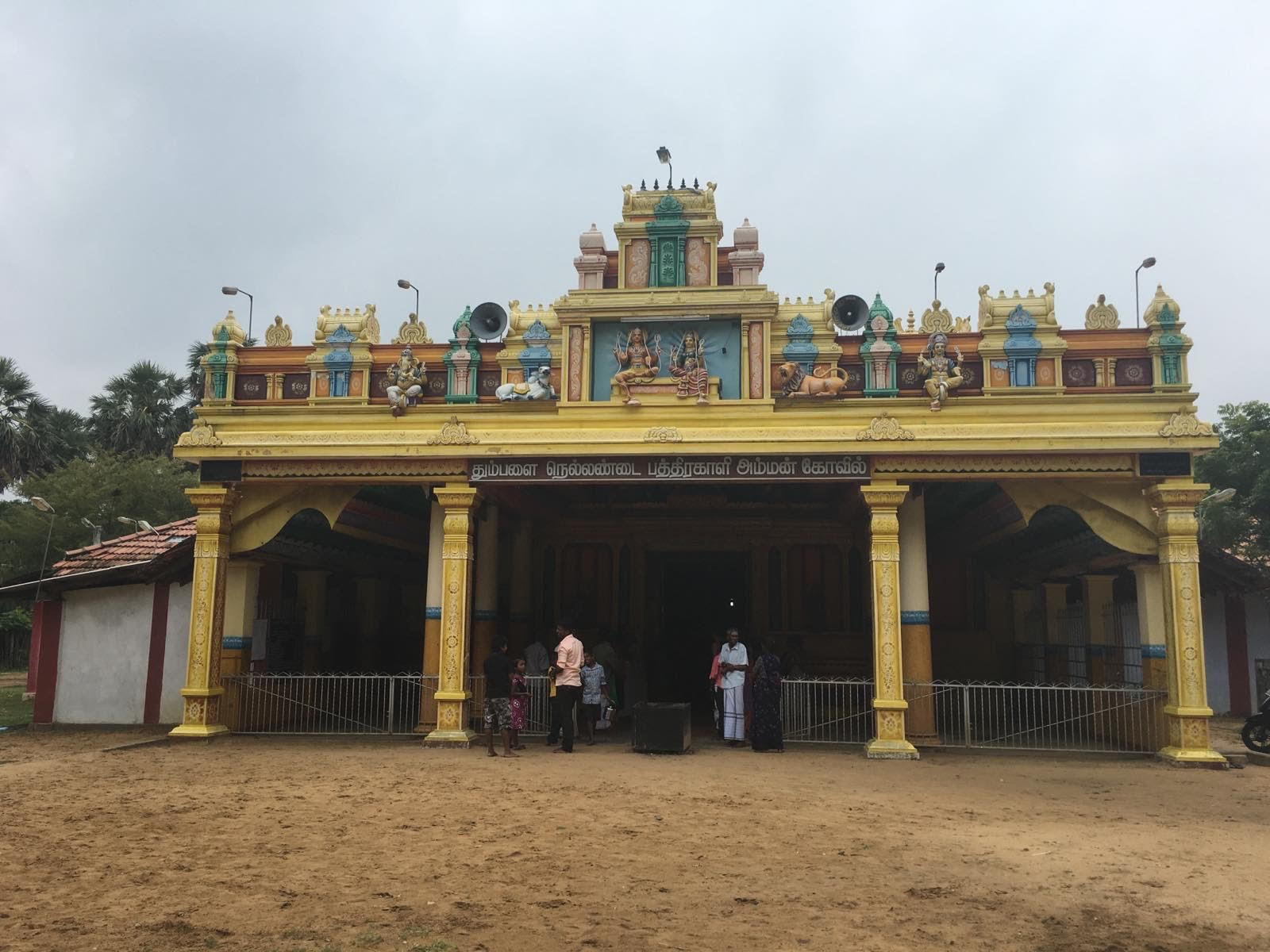
Journey Home - Conclusion
-----------------------------------------------------
After clearing the last hurdle at the Kalady Santhi army checkpoint, we briskly walked towards our house. Most houses in our neighborhood were still vacated, with feet of dried leaves in their courtyards, fallen from trees still standing tall. Some houses were partially damaged, with their walls collapsed and roofs falling off. Luckily, our house escaped the destruction, except for a small piece of roofing sheet that came off because of shrapnel.
Most of our neighbours had yet to arrive or were trapped in Vanni. It took them months to come back, after a horrendous journey. It also took us several days to clean up the mess made by the intruders, possibly the SL army or robbers who were probably looking for valuable items.
Many houses, all the way from Palaly to Kaladi Amman Kovil were bulldozed. In some cases, bodies of pets and cattle were found in a decomposed state in wells. Our well was also contaminated, not with any dead bodies of pets, but without any maintenance for a long time. It took rounds of water treatments to make the water was consumable again.
There was still a lot of food shortages and power outages, the curfew was still in place. Sporadic violences were taking place between the Tigers and the SL army, normalcy was mostly disturbed, people still had to queue up at government owned grocery stores to get the necessary items.
There were reports of people, mostly young adults who had gone missing. It turned out that the SL Army was responsible for their abductions. Most of their bodies were later found at the Chemani graveyard.
Including that of Krishanthi Kumarasamy, a former student of Chundukili girls high school, who was gang-raped and killed by the SL Army at the Kaithady army checkpoint when she was returning from the funeral of a friend, who was apparently killed in an accident involving an army truck. Later, Krishanthi’s mother, her little brother, and a family friend of theirs, who went to look for her were also murdered. All of their remains were found several weeks later at the Chemmani shallow graves. It was admitted by the convicted army personnel, that they abducted hundreds of innocent civilians during the night, brought them to the army camps located at Ariyalai, Chenmani, and Kolumputhurai, and beat them to death after intense interrogations, and buried them at Chemmani.
Parents of young children lived in fear, they were scared to send their kids to school. They started sending them outside, some to Colombo, the lucky ones immigrated to western countries. Jaffna never returned to normalcy, rather it became accustomed to abnormalcy, with daily killings, bomb attacks, cordon and search operations, reports of rapes, white van abductions and so on. It took a long fourteen years for the city to attain some sort of peace. Sadly a peace with slavery, not with freedom!
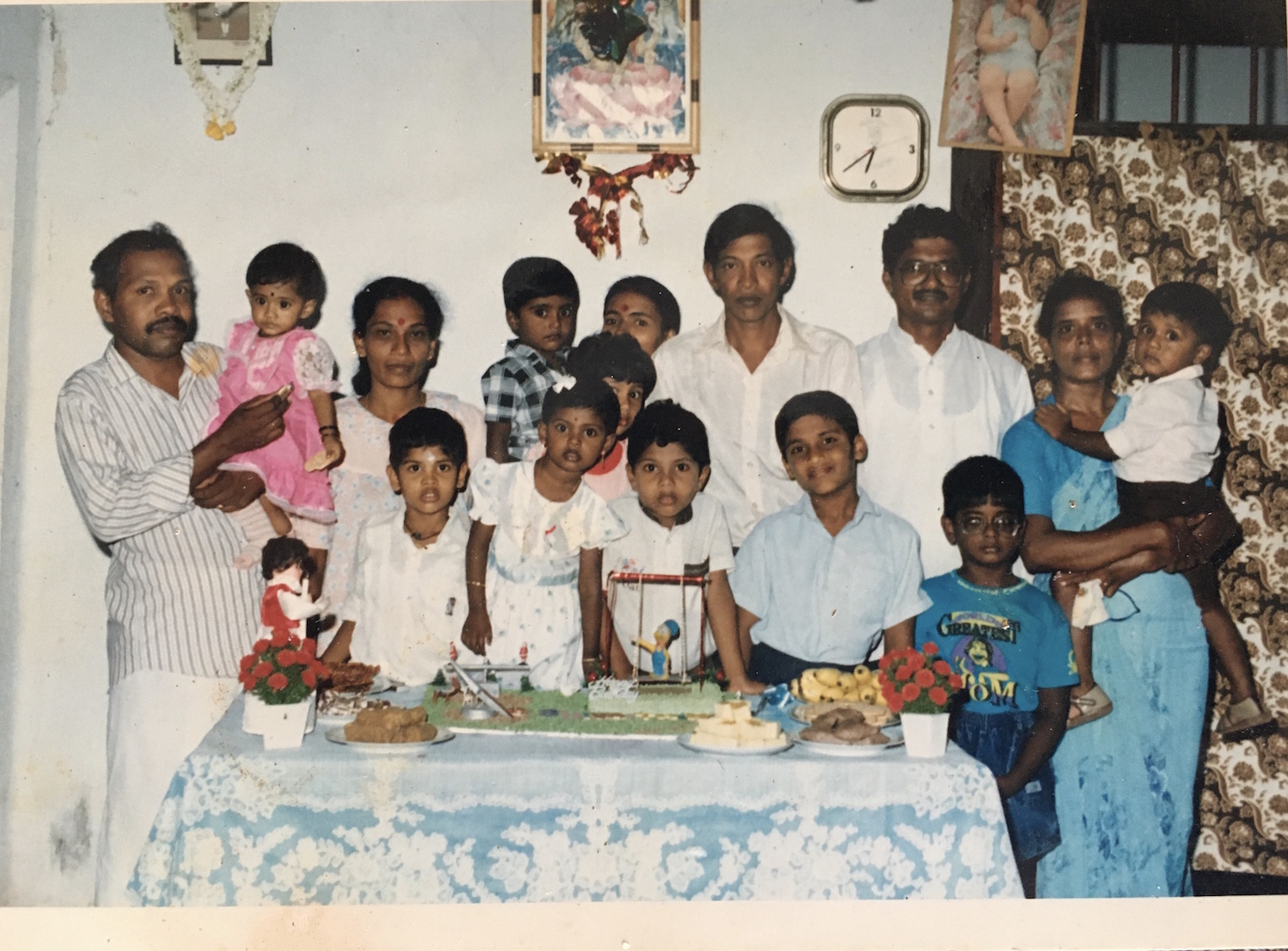 Pictured: My little sister's birthday party in 1990 at our house in Thumpalai, Point Pedro
Pictured: My little sister's birthday party in 1990 at our house in Thumpalai, Point Pedro
P.S - these are just the recounts of events that took place in Jaffna post its mass exodus on October 31, 1995, ahead of the military offensive initiated by the SL army, under the rule of President Chandrika Kumarathunga. The mass displacement led to a humanitarian crisis in the peninsula. Even though it’s been a long 25 years, the brunt of that displacement is still felt by many.
A race that lived happily in that land for centuries became the victims of a bloody civil war of 30 years, one that virtually wiped them out from the vast swaths of North-Eastern Sri Lanka, and caused them irreversible damages which continue to play out today.







